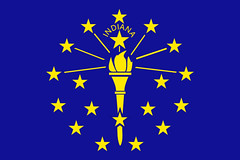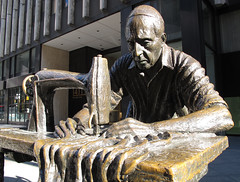
The American Legislative Exchange Council, the conservative group profiled by our September Sidney Award Winners at the Center for Media and Democracy and The Nation, really doesn’t like unembedded journalists. Beau Hodai, a reporter for In These Times got kicked out of the hotel bar where ALEC was holding its conference, by uniformed police officers, even though he had registered as a guest:
At around 10:30 on the evening of December 1, I was sitting in the Waltz & Weiser Saloon, a high-end sports bar tucked into a cove below the sub-lobby of the Westin Kierland Resort and Spa in Scottsdale, Ariz.
I had been swapping newspaper stories with Olivia Ward of the Toronto Star on one of the saloon’s overstuffed leather couches as the bar filled with attendees of the American Legislative Exchange Council’s (ALEC) 2011 States and Nation Policy Summit (SNPS).
ALEC had repeatedly refused to grant me media credentials. Nevertheless, I was a paying guest at the resort and thought I’d catch some liquor-loose-lipped lawmakers and lobbyists at the bar.
I was about to turn in for the night when I saw Phil Black, director of Kierland’s security team, talking with a group of Phoenix police officers outside the entrance to the bar. The cops–moonlighting (in uniform) for ALEC–had arrived close to an hour prior, glanced in at Ward and me, and stationed themselves just to the side of the door.
Black entered the bar and came up to me. “Would you mind coming with me, sir?”
Outside Waltz & Weiser, we were joined by the cops.
“What’s this all about?” I asked.
“The ALEC people don’t want you here,” said Black, “and we understand that your reservations were made under false pretenses.”
I asked Black, given the fact that I had not been accused of any crime, why I was surrounded by armed, uniformed cops. False pretenses? I had given the front desk my valid photo driver’s license and my credit card.
Black said that he and the police officers would escort me to my room and help me pack. I was told if I returned, or refused to leave, I would be arrested and charged with criminal trespassing.
Hodai’s story is a collaboration with the Center for Media and Democracy.
[Photo credit: r3v || cis, Creative Commons.]











